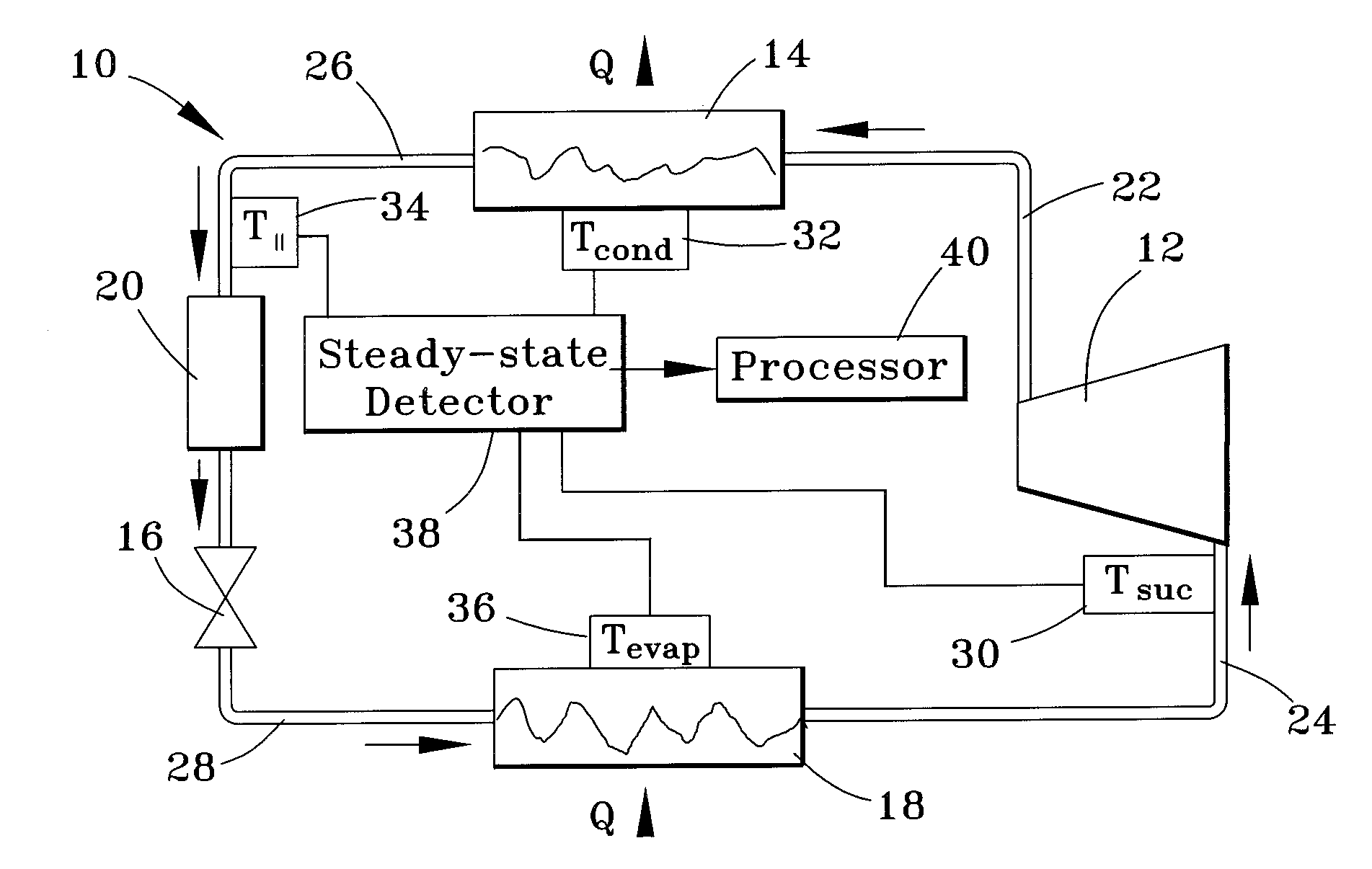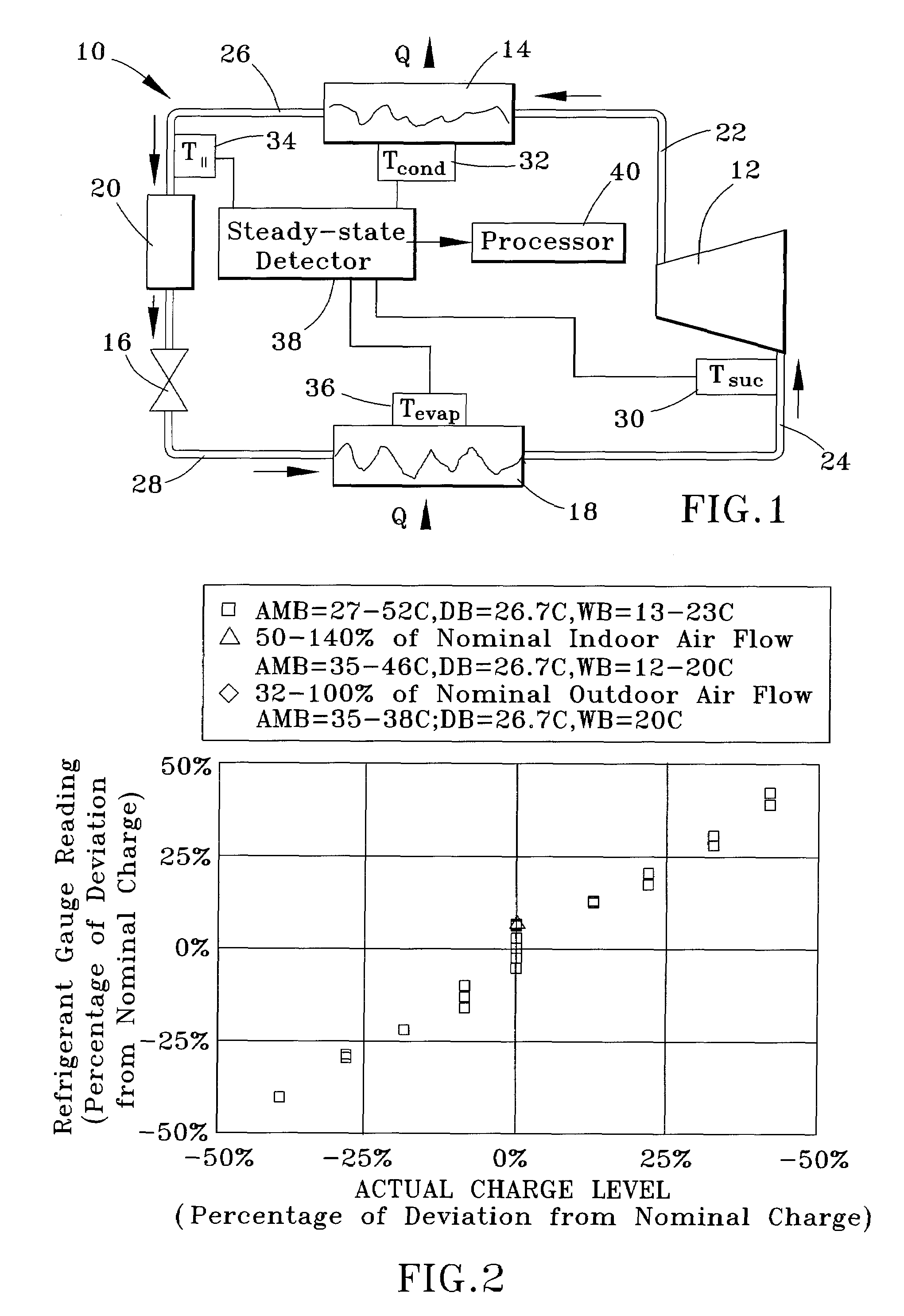Apparatus and method for determining refrigerant charge level
a technology of refrigerant charge and apparatus, applied in the direction of domestic cooling apparatus, heat measurement, instruments, etc., can solve the problems of time-consuming and costly procedures, system overcharge or undercharge, and inability to provide quantitative information, etc., to achieve low-cost non-invasive and low-cost effects
- Summary
- Abstract
- Description
- Claims
- Application Information
AI Technical Summary
Benefits of technology
Problems solved by technology
Method used
Image
Examples
Embodiment Construction
[0015]A typical vapor-compression refrigeration cycle system 10 is illustrated in FIG. 1. The system 10 includes a compressor 12, a condenser 14, an expansion device 16, and an evaporator 18. As is common, FIG. 1 also shows a filter / drier 20 installed in the system 10 between the expansion device 16 and evaporator 18. The various components of the system 10 can be fluidically connected with conduits, such as copper tubing or any other fluidic connections.
[0016]As known in the art, the compressor 12 increases pressure in the system 10 by compressing a refrigerant vapor. The conduit connecting the outlet of the compressor 12 to the condenser 14 is typically referred to as a discharge line 22, and thermodynamic states of the refrigerant within the discharge line 22, for example, pressure, temperature, enthalpy, etc., are referred to as, for example, discharge pressure, discharge temperature, discharge enthalpy, etc. The conduit connecting the inlet 26 of the compressor 12 to the evapor...
PUM
| Property | Measurement | Unit |
|---|---|---|
| temperature | aaaaa | aaaaa |
| temperature | aaaaa | aaaaa |
| wet bulb temperature | aaaaa | aaaaa |
Abstract
Description
Claims
Application Information
 Login to View More
Login to View More - R&D
- Intellectual Property
- Life Sciences
- Materials
- Tech Scout
- Unparalleled Data Quality
- Higher Quality Content
- 60% Fewer Hallucinations
Browse by: Latest US Patents, China's latest patents, Technical Efficacy Thesaurus, Application Domain, Technology Topic, Popular Technical Reports.
© 2025 PatSnap. All rights reserved.Legal|Privacy policy|Modern Slavery Act Transparency Statement|Sitemap|About US| Contact US: help@patsnap.com



